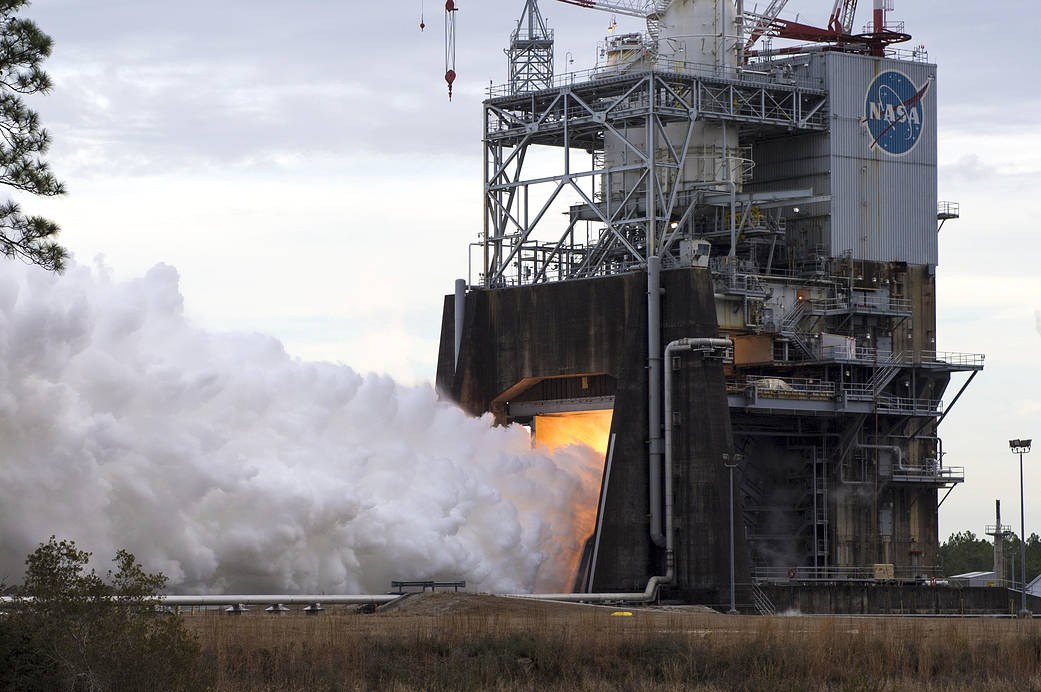NASA followed up the first RS-25 test of 2018 with a second hot fire of the Space Launch System (SLS) engine on Feb. 1 at Stennis Space Center near Bay St. Louis, Mississippi. The full-duration, 365-second certification test of another RS-25 engine flight controller on the A-1 Test Stand at Stennis comes about two weeks after a Jan. 16 hot fire. The test marks completion of green run testing for all four of the new RS-25 engine flight controllers needed for the second flight of NASA’s SLS rocket. NASA is building SLS to send humans to such deep-space destinations as the moon and Mars.
The Exploration Mission-1 (EM-1) flight will test the new rocket and carry an uncrewed Orion spacecraft into space beyond the moon. Exploration Mission-2 (EM-2) will be the first flight to carry humans aboard the Orion spacecraft, returning astronauts to deep space for the first time in more than 40 years.
RS-25 controllers for the EM-1 flight already are installed on the engines that will be part of the SLS core stage. In addition to the flight controller, the Feb. 1 hot fire at Stennis also marked the third test of a 3D-printed pogo accumulator assembly for the RS-25 engine. Testing of the 3D-printed component is part of an ongoing effort to use advanced manufacturing techniques and processes as a means of reducing engine construction costs. NASA plans to test a number of 3D-printed components for the RS-25 engine.
For the recent test, flight controller ECU 11 was installed on RS-25 developmental engine E0528 and fired under conditions akin to an actual launch. Each RS-25 hot fire is designed to test and evaluate the performance of the engine and its components in specific scenarios. Typically, an engine is cycled through various thrust levels that may be needed during flights to help engineers gather as much performance data as possible. Once certified, tested flight controllers are removed for installation on flight engines for the SLS rocket.
All RS-25 engines and flight controllers for SLS missions are being tested at Stennis, as is the flight core stage for the first SLS mission. SLS core stage testing will involve installing the stage on the B-2 stand at Stennis and firing all four of the RS-25 engines simultaneously. At launch, the four RS-25 engines will fire simultaneously to generate 2 million pounds of thrust and working in conjunction with a pair of solid rocket boosters to produce more than 8 million pounds of thrust. RS-25 engines for initial SLS flights are former space shuttle main engines, modified to provide additional power to launch the larger SLS rocket.
The new flight controller is a key component of that modification, serving as the RS-25 “brain” to help the engine communicate with the SLS rocket and to help control engine operation and internal health diagnostics. RS-25 tests at Stennis are conducted by a team of NASA, Aerojet Rocketdyne and Syncom Space Services engineers and operators. Aerojet Rocketdyne is the RS-25 prime contractor. Syncom Space Services is the prime contractor for Stennis facilities and operations.
Image Credit: NASA



























